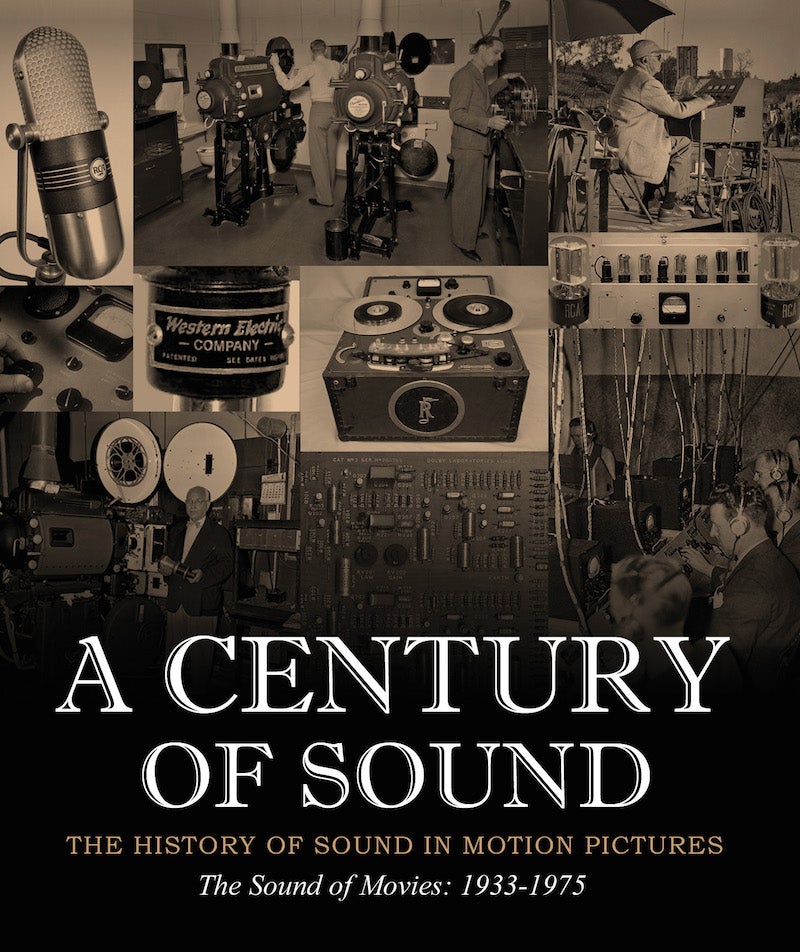
About the Project
The History of Sound in Motion Pictures: The Sound of Movies 1933-1975 is the second installment of former UCLA Preservation Officer Robert Gitt's series, A Century of Sound. This 4-disc Blu-ray set constitutes a virtual encyclopedia on sound in motion pictures, illustrated with more than 90 excerpts from feature films and shorts, all of which have been transferred in high definition from the best available 35mm nitrate and safety film elements or high definition video and audio masters. In addition, more than 1,200 photographs, drawings, diagrams and articles are used to help tell the story of sound in motion pictures. Finally, Gitt provides a brief on camera introduction and a voice over narration for each chapter.
Written, Produced and Directed by: Robert Gitt. Total Runtime: 737 min. Year: 2015. Color: Color/B&W. Aspect Ratio: 16 x 9; 1080p High Definition. Audio: Dolby Digital. Language: English. Region Code: NTSC Region Free. Format: Blu-ray.
How to order a Blu-ray set
A Century of Sound was created as an educational tool, intended for classroom and individual study use only. This Blu-ray set is available for free to archives, libraries, educational institutions and other non-profit organizations — and to qualified educators, researchers and scholars — with a shipping fee applying.
To request a copy, please download and complete this order form (PDF). Then, email the form to centuryofsound@cinema.ucla.edu. Please indicate if a DVD of the first installment, The Beginning, 1876-1932, is also desired.
Special Thanks
Funding for A Century of Sound generously provided by: The Louis B. Mayer Foundation, The Rick Chace Foundation, Tuscan Corporation, and Underground Vaults and Storage.
The producers gratefully acknowledge the donation of services from: Audio Mechanics, California Digital Post, Deluxe Media - Chace Audio, DJ Audio, Endpoint Audio Labs, History for Hire, Phase Three Productions, Point.360 Digital Film Labs, Post Interactive, Simon Daniel sound, and Sony Colorworks.

|
Chapter One Pre-1933 Decline of Early Disk Optical Sound Technologies Chapter Two 1933 Problems Affecting Motion Picture Sound Chapter Three 1928 - 1935 Variable-Density and Variable-Area Optical Track Formats Chapter Four 1935-1940 RCA Photophone: Problems and Progress Chapter Five 1930s-1940s Optical Track Distortion Problems Chapter Six 1935-1941 The Shearer Horn Two-way Loudspeaker System Chapter Seven 1935-1950s Efforts to Expand Dynamic Range Chapter Eight 1934-1954 Push-Pull Optical Recording and Reproduction Chapter Nine 1930-1942 Improvements in Moving Coil and Ribbon Microphones Chapter Ten 1936-1941 Optical Recording Film Stocks Chapter Eleven 1945-1951 Talking Pictures 20th Anniversary |
|
Chapter Twelve 1878-1948 Early Magnetic Recording Equipment Chapter Thirteen 1946-1975 Magnetic Sound Adopted for Motion Picture Chapter Fourteen 1881-1941 Early Stereophonic Sound Developments Chapter Fifteen 1948-1955 Television Impacts Movie Attendance Chaper Sixteen 1953-1960s 20th Century-Fox Develops CinemaScope Chapter Seventeen 1954-1958 Perspecta: Directional Sound from Mono Optical Tracks Chapter Eighteen 1890s-1975 Wide Gauge Film Formats Chapter Nineteen 1950-1975 Monophonic Optical Tracks Continue as Industry Standard Chapter Twenty 1965-1975 Dolby A-Type Noise Reduction Developed
|






 Mobile Navigation
Mobile Navigation
